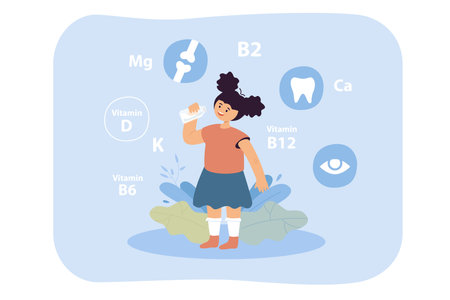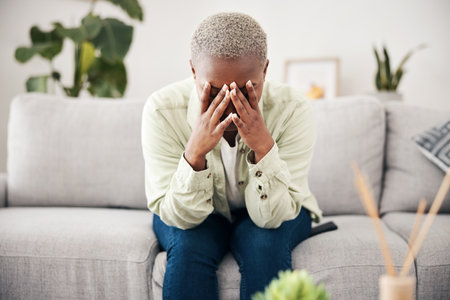1. Understanding the Emotional Impact of Stroke
The Emotional Rollercoaster After a Stroke
Recovering from a stroke isn’t just about healing the body; it’s also about caring for the mind and emotions. Many stroke survivors and their families are surprised by how deeply a stroke can affect mental health and emotional wellbeing. It’s completely normal to experience a wide range of feelings during recovery, and understanding these reactions is an important part of rehab in the United States.
Common Psychological Responses to Stroke
| Emotional Response | Description | How It Affects Recovery |
|---|---|---|
| Grief and Loss | Feeling sadness over lost abilities or changes in lifestyle; may involve mourning independence or previous identity. | Can lead to withdrawal, lower motivation, and difficulty engaging in rehab activities. |
| Anxiety | Worry about another stroke, health complications, or future independence; may include panic attacks or constant worry. | Makes it harder to focus on therapy and can cause sleep problems, which slow down recovery. |
| Depression | Feeling hopeless, helpless, or overwhelmed; loss of interest in things once enjoyed; common after stroke. | Lowers energy and drive, making it tough to participate in exercises and daily routines. |
| Changes in Identity | Struggling with the sense of “who am I now?” due to physical, speech, or cognitive changes. | Affects self-esteem and relationships with family and friends; may result in social isolation. |
The Importance of Addressing Emotions Early
In American rehab settings, it’s recognized that addressing mental health early can make a big difference in overall recovery. Open conversations about emotions—whether with therapists, doctors, support groups, or loved ones—help reduce stigma and encourage people to ask for help when needed. Rehab teams often include mental health professionals who understand how stroke impacts mood, thinking, and relationships.
Recognizing Signs That Help Is Needed
If you notice persistent sadness, loss of interest in activities, changes in appetite or sleep patterns, intense anxiety, or withdrawal from loved ones, these may be signs that additional emotional support is needed. Remember: asking for help is a sign of strength—not weakness—and is an important step toward feeling better both physically and emotionally.
2. The Role of Mental Health in Comprehensive Stroke Rehab
Recovering from a stroke is not just about regaining physical strength and movement—its also about healing emotionally and mentally. In the United States, rehab programs are increasingly focusing on the whole person. This means that addressing mental health is just as important as physical therapy for a successful recovery.
Why Mental Health Matters in Stroke Recovery
When someone has a stroke, they often face big changes in their life. These changes can lead to feelings of sadness, frustration, anxiety, or even depression. These emotions are natural but, if ignored, can slow down the rehab process. Research shows that people who feel supported emotionally tend to make better progress in physical therapy and daily activities.
The Connection Between Emotional Well-being and Physical Recovery
Mental health and physical recovery go hand-in-hand. If a person feels hopeful and motivated, they are more likely to stick with rehab exercises and routines. On the other hand, untreated stress or depression can drain energy and make it hard to keep up with therapy appointments or self-care tasks. Here’s how emotional well-being impacts different areas of stroke rehab:
| Emotional State | Impact on Rehab Progress |
|---|---|
| Positive (Hopeful, Motivated) | More engagement in therapy, better progress, higher independence |
| Negative (Anxious, Depressed) | Less participation, slower recovery, increased risk of complications |
Integrating Mental Health Support in Rehab
Comprehensive stroke rehab teams in the U.S. usually include psychologists or counselors who help patients talk about their feelings and manage stress. Support groups are also common—they connect survivors with others going through similar experiences. Family involvement is encouraged too, since loved ones play a key role in emotional healing.
By taking care of both body and mind during stroke rehab, people have a better chance at regaining independence and enjoying life again.

3. Identifying and Managing Post-Stroke Depression and Anxiety
Recognizing the Signs Early
Depression and anxiety are common after a stroke, but they can be tough to spot. Many survivors and their families focus on physical recovery and may overlook emotional changes. Early detection is key, as addressing mental health issues early can greatly improve overall recovery.
Common Signs of Post-Stroke Depression and Anxiety
| Depression | Anxiety |
|---|---|
| Feeling sad or hopeless most days | Constant worry or fear |
| Losing interest in activities | Restlessness or feeling on edge |
| Changes in appetite or sleep patterns | Trouble sleeping or concentrating |
| Fatigue or low energy | Panic attacks or sudden feelings of dread |
| Difficulty focusing or making decisions | Avoiding activities due to fear or worry |
The Importance of Routine Mental Health Screenings
Routine mental health screenings should be a standard part of stroke rehab in the U.S. These screenings help catch problems early—even before survivors or families notice symptoms. Healthcare providers often use simple questionnaires during checkups to ask about mood, anxiety, and daily functioning.
How Screenings Can Help:
- Identify emotional challenges quickly so support can start right away
- Track changes over time to see if treatment is working
- Encourage open conversations about feelings and mental well-being
- Reduce stigma by showing that mental health care is just as important as physical care
Intervention Strategies: Getting the Right Support
If depression or anxiety is detected, taking action quickly makes a big difference. Here are some ways healthcare teams and families can help:
Counseling and Therapy Options:
- Cognitive Behavioral Therapy (CBT): A practical, goal-oriented therapy that helps people change unhelpful thoughts and behaviors.
- Support Groups: Meeting with others who have had similar experiences can provide comfort, encouragement, and tips for coping.
- Family Counseling: Helps loved ones understand what the survivor is going through and learn how to offer better support.
- Psychoeducation: Providing information about post-stroke emotional changes so survivors know what to expect and when to ask for help.
When to Refer to Psychiatric Support:
- If symptoms are severe or don’t improve with basic counseling, a referral to a psychiatrist may be needed.
- A psychiatrist can evaluate if medication might help, especially if depression or anxiety interferes with daily life.
- The rehab team works closely with mental health professionals to coordinate care—making sure both physical and emotional needs are met.
4. Building a Support System: Family, Friends, and Community Resources
Recovering from a stroke is not just about physical healing—it’s also about emotional strength and mental well-being. One of the most important parts of this journey is having a strong support system. In the United States, social support comes in many forms, from family and friends to peer groups and community-based resources. Each part of your network plays a unique role in helping you build resilience and find hope during recovery.
The Importance of Social Support
Having people who care about you can make a huge difference after a stroke. Supportive relationships help reduce feelings of isolation, boost confidence, and encourage positive thinking. Family members and friends can provide daily encouragement, help with tasks, or simply listen when you need to talk.
How Different Types of Support Help
| Type of Support | Examples | Benefits |
|---|---|---|
| Family & Friends | Emotional comfort Assistance with daily activities Transportation to therapy appointments |
Reduces loneliness Makes daily life easier Keeps you motivated |
| Peer Groups | Stroke survivor meetings Online support forums Mentorship programs |
Connects you with others who understand Shares helpful tips Builds hope through shared experiences |
| Community Resources | Local rehabilitation centers Mental health counselors Nonprofit organizations like the American Stroke Association |
Offers professional guidance Provides education and training Links you to financial or transportation help |
Peer Groups: Connecting With Others Who Understand
Peer support groups are especially valuable in the United States. Many hospitals and community centers offer group meetings where stroke survivors can share their stories, discuss challenges, and celebrate progress together. These groups create a safe space for everyone to express emotions and learn from each other. Online forums—like those offered by the American Heart Association—are also popular ways to connect without leaving home.
The Role of Community-Based Resources
A variety of organizations across America provide extra help for stroke survivors. Community health clinics, nonprofit organizations, and religious groups often offer counseling, educational workshops, or transportation services. Many cities have “stroke clubs” or special events that allow survivors and families to meet others who are facing similar challenges.
Quick Tips for Building Your Support System:
- Reach out to family and friends—let them know how they can help you.
- Ask your rehab team for recommendations on local or online support groups.
- Visit websites like stroke.org for resources tailored to your needs.
- If possible, join community events or workshops focused on stroke recovery.
- Don’t hesitate to seek professional counseling if you feel overwhelmed or anxious.
The journey after a stroke can feel overwhelming at times, but building a solid support system makes it easier to manage emotional ups and downs. By connecting with loved ones, peers, and community resources, you’ll be better equipped to handle stress and rediscover joy throughout your recovery process.
5. Empowering Patients and Caregivers through Education and Advocacy
Understanding the Importance of Mental Health Education after Stroke
Recovering from a stroke is not just about physical healing—it’s also about supporting mental health. Many stroke survivors and their families feel overwhelmed by the emotional changes that can happen, like anxiety, depression, or mood swings. By learning more about these challenges, both survivors and caregivers can better understand what to expect and how to cope.
Reducing Stigma around Mental Health
Mental health issues are common after a stroke, but there is often stigma attached to talking about them. This stigma can make it hard for survivors and families to ask for help. Open conversations and education can break down these barriers. Hospitals, rehab centers, and support groups in the U.S. now focus on making mental health discussions a normal part of stroke recovery.
Common Mental Health Challenges after Stroke
| Challenge | How It Might Look | What You Can Do |
|---|---|---|
| Depression | Feeling sad, losing interest in activities, changes in sleep or appetite | Talk to your doctor, join a support group, consider counseling or medication |
| Anxiety | Constant worry, panic attacks, fear of another stroke | Practice relaxation techniques, communicate with your care team, ask about therapy options |
| Mood Swings | Sudden crying or laughing, irritability | Keep track of triggers, talk openly with loved ones and professionals |
| Cognitive Changes | Trouble focusing, memory problems | Use reminders and checklists, ask for cognitive rehab services |
Encouraging Self-Advocacy and Ongoing Communication
It’s important for both survivors and caregivers to speak up about any emotional or mental health concerns. Here are some ways to build self-advocacy skills:
- Ask Questions: Don’t be afraid to bring up emotional symptoms during medical appointments.
- Keep a Journal: Track changes in mood or behavior to share with your care team.
- Create a Support Network: Connect with other survivors, caregivers, or local support groups for advice and encouragement.
- Stay Informed: Learn about resources available through hospitals, rehabilitation centers, and national organizations like the American Stroke Association.
The Role of Caregivers in Advocacy and Education
Caregivers play a big role in recognizing signs of emotional distress and helping survivors get the right support. They can help by:
- Attending educational sessions on stroke recovery and mental health together with the survivor.
- Helping organize appointments with counselors or therapists if needed.
- Encouraging open conversations at home about feelings and struggles.
- Lending support when advocating for services within the healthcare system.
Key Takeaways for Patients and Caregivers in the U.S.
- Mental health is a vital part of stroke recovery—don’t ignore it.
- No one should feel ashamed to seek help for emotional challenges after stroke.
- Your voice matters: talk regularly with your care team about all aspects of recovery—including mental health.
- You’re not alone; many resources exist to help both survivors and caregivers navigate this journey together.


